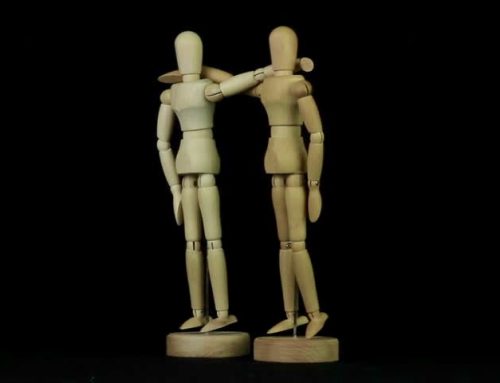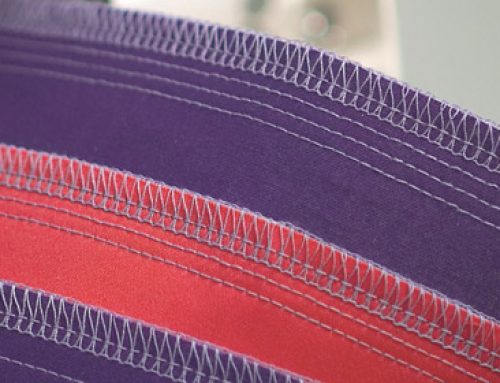When starting your first clothing line or retail store, correctly determining your clothing order quantity is essential to securing the right amount of products without overstocking yourself.
However, this decision won’t entirely be yours to make. Manufacturers always have minimum order quantities, and whether you only need to put one item on your Shopify store or fill all your stockists, you’ll still need to meet minimum orders.
Determining Your Clothing Order Quantity
Your order minimums will be based on a variety of factors including:
- Manufacturers production totals per style, size and colour
- Complexity of your garments’ designs
- Your choice of fabric and blends for each garment
- Fabric consumption based on your garments’ exact seam measurements
- Dyeing or printing techniques
Manufacturers’ Minimum Order Quantities
What many first time designers don’t understand is that they can’t simply walk in to a factory and dictate their own terms for order quantities. Reputable manufacturers are already busy, they already have on-going client relationships with large return orders.
Producing only a few pieces because you’re “just starting out” or “don’t have the budget yet” or making promises early on that “once my sales come in I’ll make bigger orders” doesn’t instil trust from the manufacturer. Order quantities are mandatory for two reasons.
Minimum orders are in place because suppliers have minimum order quantities when they sell fabrics and materials. Just because you want five printed bikini sets doesn’t mean the manufacturer can simply purchase a small amount of nylon / lycra. They have to meet the supplier’s minimum order quantities as well. A bolt of fabric can come in any size from 30 metres to 100 metres, and if you order something unique, you could be looking at 3,000 metres of fabric.
And the other reason there are MOQs is because the manufacturer needs to stop all other productions to get yours started, set up their machines and printers, and set aside staff to produce your garments.
Example: Making six pieces of one style in three sizes isn’t realistic. The amount of time it takes to make and grade your patterns then change the machinery during production cycles simply isn’t worth it for them. It’s even less attractive if you’re printing or need other embellishments.
You’ll instantly notice your production costs are higher when producing lower quantities of clothes because of the sheer production cost and time-cost manufacturers are faced with. Most likely they won’t even entertain your project. Have you looked at Alibaba lately? MOQs in China, India, and Sri Lanka are starting in the thousands!
If you’re looking for very small order quantities like this, it’s best to work with local tailors in your area.
Now you know why there are minimum order quantities in place. So when you’re determining your clothing order quantity, keep in mind that you will need to at least meet the manufacturers’ MOQs.
Design Complexity: What’s Basic and Does it Matter?
The complexity of your garments’ overall style as well as the complexity of your printing designs will have an impact on your MOQs.
For some manufacturers, the easier it seems to produce your garments and the faster they feel they can produce them determines whether they’ll even take on your project. In the clothing manufacturing industry, time is money. This is why there are many manufacturers who specialise in simple garments such as t-shirts or hats.
Specialised manufacturers also tend to be able to produce smaller quantities because they’re generally already producing what you’re looking to make. Simply changing the print on a t-shirt or adding some embroidery doesn’t add that much time to their production cycles, and they can usually take on more projects at one time.
But this can be a good thing. For example, in our network, we have some amazing specialised manufacturers. So if you’re a streetwear brand or a swimwear brand, we know exactly how fast a turnaround can be for you and we can even help you with determining your clothing order quantity for your first run.
If your garments are complex, like evening wear dresses, then it will take longer to produce the items and as such, you’ll face higher production costs but possibly lower MOQs.
Manufacturers can only know how to help you in determining your clothing order quantity once they’ve reviewed your detailed tech packs.
Fabric Consumption: Children’s vs Adult Clothing
When we receive enquiries for children’s clothing, it always surprises our clients when we tell them their MOQs. But it’s essential to keep one thing in mind when determining your clothing order quantity for children’s garments.
The important thing to keep in mind is that although the items seem smaller, the fact remains that manufacturers are still faced with fabric MOQs, which impacts total pieces in your order.
Simply put, children’s clothes consume less fabric as compared to adult clothes, which means manufacturers can produce more pieces from the same amount of fabric.
Example: 100% combed cotton comes in minimum fabric bolt sizes of 30 metres through suppliers. To produce a finished adult t-shirt, manufacturers require around 1m of fabric. But a children’s t-shirt requires about half as much fabric. So when determining your clothing order quantity for children’s t-shirts, you’re looking at around 60 pieces as opposed to the 50 pieces MOQ for an adult t-shirt. Now multiply that by the number of colours you’re producing in, and you have your MOQs.
Fabric Choices: Stock Fabric Colour vs Custom Dyed vs Printed
Fabric choice is probably the most important aspect of determining your clothing order quantity because fabrics come in specific roll sizes, and in a huge range. But what many newcomers to the industry don’t realise is that if they choose to dye or print fabric, the MOQs change.
The easiest to source fabrics with the lowest suppliers’ and manufacturers’ MOQs are stock fabrics that are already pre-dyed. For example in Bali, our suppliers carry ready-to-use stock cotton which comes in some 40 to 50 available colours. By choosing stock fabrics like this, manufacturers aren’t forced to purchase so much at one time, hence, productions using these fabrics bear lower production quantities.
What if the colour you want isn’t already available?
You can easily choose specific colours through Pantone’s colour matching chart which is a standard in the industry. Check out Pantone’s Colour Finder.
Be warned, depending on your fabric choice, dyeing or printing your fabric can easily increase your production MOQs, sometimes a lot. Whether you’re dyeing, screen printing, or digitally printing, you can see MOQs range from 50 metres to 1,000 metres depending on the fabric you choose.
For example, custom dyeing cotton comes with an MOQ of 50 metres, whereas dyeing polyester or nylon comes with an MOQ of 1,000 metres. Screen printing cotton with a specific solid colour will have an MOQ of 100 metres, whereas digitally printing this has an MOQ of 50 metres.
That’s because manufacturers need to mix a specific amount of dye to achieve the exact colour you’re looking to match, even for screen printing dyes. And with printing, the machines need to be set up to print a specific amount of fabric.
For a short video on how digital printing looks, take a look at our Instagram video.
These all impact your production MOQs so you’ll need to keep this in mind when producing clothes. Especially those who own children’s brands, and want to dye a specific colour that’s not in stock. That means the total number of pieces from the manufacturer will seem high, but in reality, this is due to your choice of fabric and custom dyeing / printing requirements.
So whether you’re a start-up looking for small orders, or you’re simply on a tight budget, when determining your clothing order quantity, you’ll need to take into account all of the above factors before creating your range or requesting that the manufacturers produce within your chosen number of pieces. Sometimes, they just don’t have a choice.



